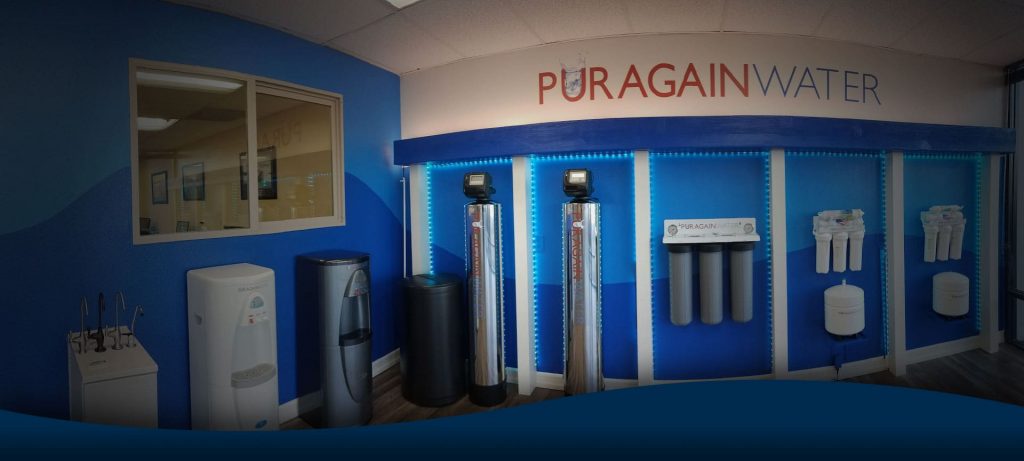
Hard water can create unsightly scaling on your appliances, dull your hair, and cause an unpleasant taste in tap water. Salt-free water softener systems have long been a way to treat water and make it more efficient to use at home.
A salt-free water system in California uses less water than traditional softeners, resulting in lower bills and less strain on the environment. Here’s a rundown of your options when it comes to water conditioners.
What is Hard Water?
Hard water is best described as water that is high in dissolved minerals. Water usually becomes hard after percolating through stone deposits, including lime and chalk, where it absorbs minerals.
Calcium and magnesium are the primary minerals present in hard water. They are a good addition to our diet, but in our water, they can cause problems. Even though these minerals are safe in drinking water, they damage surfaces and appliances in your home.
Hard water leaves residue behind in the form of limescale, a substance that is difficult to remove. It hardens over time and sometimes makes pipes narrower.
How Can You Tell If You Have Hard Water?
There are a few obvious signs that indicate you have hard water in your household. You may suspect that you have hard water based on some of these issues.
- First, look for visible mineral buildup. Hard water can result in scale buildup inside your pipes and in other less visible places, but it often ends up on your faucets and your shower head. The mineral deposits will be white, chalky, and solid.
- There are a few at-home tests, too. You can test your water by filling a bottle and adding just a few drops of liquid soap. When you shake the bottle, the water inside should become frothy and foamy. If no foam appears, your water is hard. This is because hard water prevents soap from lathering up.
- Most people notice their water is hard because of the residue it leaves behind on faucets. Dishes may appear filmy because of the minerals left behind.
These negative effects are why it’s a good idea to invest in water softeners.
How Can You Measure Water Hardness?
Water hardness is measured in terms of grains per gallon, or milligrams per liter. Soft water can have up to 60 mg/L of calcium, while hard water has more than 121 mg/L. Anything in between is considered moderately hard.
There are several ways to find out how hard your water is. First of all, you can check your city’s website to see how hard the water in your area is.
If you want more specific information, you can get a test on the water in your own household. Puragain Water offers free water testing, and it can tell you the pH and chlorine levels in your water in addition to chemical testing and hardness testing.
Why Should You Soften Your Water?
There are lots of reasons to use water softeners. For one, you can avoid costly damage to your plumbing system or appliances that sometimes happens when there’s scale formation. Water softening will extend the life of your appliances.
Scaling is a buildup of minerals like lime and calcium, and it can leave behind thick deposits on your appliances. Buildup collects everywhere from shower heads to the inside of your pipes. Softened water doesn’t cause scaling.
The calcium and magnesium in hard water combine with soap to create a lingering residue. It often collects in bathrooms, such as on shower doors or countertops. Water treatment will make it easier to clean your home.
It can leave a film on your hair and make it look dull. That’s because the minerals can stay behind in your hair, even when you wash it. Softening water can have a positive impact on your hair and skin.
These usually show up in hot water heaters and can settle inside the tank. When the water heater is working, the sediment can bounce around and make loud noises.
What Is a Salt-Free Water Softener?
Most water softeners use salt to remove minerals in the water. Salt-free water softener systems are different, and they focus on crystalizing the minerals in water instead of absorbing them like salt-based softeners. These are also called water conditioners.
Water softener salt comes in the form of either potassium chloride or sodium chloride. These pellets are used for an ion exchange process. During this process, the resin bed in the softener comes into play.
The bed holds salt particles, and it removes calcium and magnesium from the water and replaces it with salt. The minerals are then held in the resin bed, and the softener flushes the water out to remove them. After the ion exchange, the tank fills up with a brine that replaces the salt in the resin bed.
The sodium option is cheaper, but it may not be the best choice for people with dietary concerns related to sodium intake. Potassium is more expensive, but it has more health benefits and is good for plant life.
Need Servicing? Call us now at 760-317-9741 to schedule an appointment!
Why Should You Choose a Salt-Free Water Softener System?
Because of the presence of potassium, saltless water softener systems crystalize minerals instead of removing them. Some people don’t find this option appealing, but others may prefer it.
One reason to choose a salt-free system is because of concerns for the environment. A salt-based system uses about 25 gallons of water for each regeneration cycle.
When using salt-free systems, you won’t have to frequently replace salt. Potassium pellets last longer, which can be more convenient. A salt-free whole house water filtration system may require less maintenance.
No matter what you choose, we can help you find and install the best option for your needs. Contact us at Puragain Water today.


